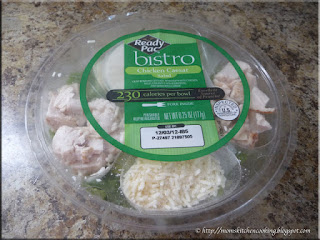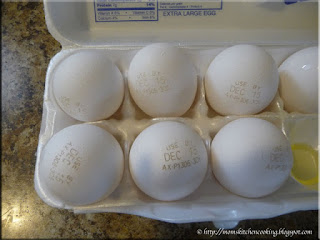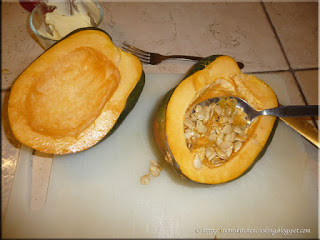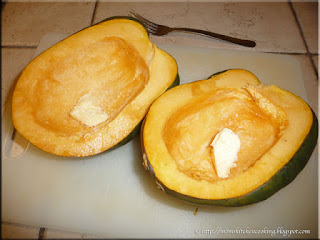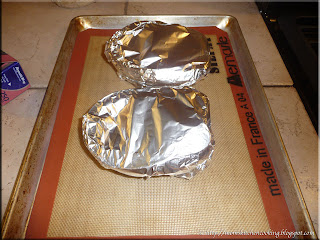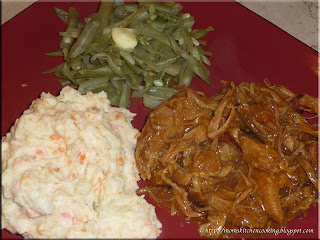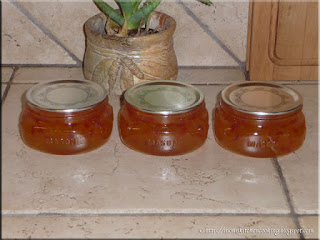
On this last day of 2012, the last Frugal Kitchens 101 post for 2012, I thought it would be interesting to discuss a topic that become a growing concern over the past year. Food manufacturers have been using two product labels to help increase the sales of their products. The first term is natural and the second is organic. All organic foods are natural foods but many natural foods are not organic. This creates confusion for the consumer especially when they find that their natural food product contains one or more GMO and/or synthetic food additives even though they thought they were buying a safer, healthier product. Over the past year, a couple of the larger manufacturers (Kashi and now General Mills) have been on the hot seat over GMO and the implication of GMO ingredients in their food products. In fact, General Mills is currently in the midst of an anti-GMO backlash after contributing $1.1 million dollars to the anti-Proposition 37 campaign in California, a bill that if passed would force the food industry in California to declare any GMO ingredients in their food products. Despite this, the food industries use buzz phrases like 'natural source of fibre', 'farm fresh goodness', 'naturally good for you' and so on when in fact the word natural on any product is nothing more than a touchy, feel good buzz word to get the consumer to buy the product. I grow organically, buy organic meats/poultry/eggs and use both edible and inedible organic products. If I have a choice between organic and non-organic, organic wins every time. So what is the difference between natural and organic AND why is organic the frugal choice?
Natural
- The word natural or any implication that the food product is natural is merely a sales tactic. It implies the food is good for you in some way playing off the consumer's belief that natural is better. The reality is there are a lot of natural substances that are toxic to the human body and even have the potential to be fatal (eg. Bella Dona, poison ivy).
- No certification or testing is required in order for the food manufacturer to use the word natural.
- Although the word natural implies healthier, better for you it in no way guarantees the absence of GMO ingredients nor does it guarantee less sodium, sugar, fat or preservatives.
- The word natural especially when used to describe food additives is about as confusing as it gets. Dried beaver castor glands (anal sacs) are used as a natural food flavouring for vanilla, raspberry and strawberry flavoured foods and beverages. True, the castor glands are natural but let's face it if the food industry actually put that on their food products rather than 'natural flavour', how fast do you think that product would sell?
- Any product labelled as natural is usually so heavily processed to begin with. Heavily processed foods are a poor food value choice because they are high in calories, high in food additives especially sodium/sugar and high priced when compared to whole foods.
- In general any food product labelled natural is close to the same price as similar products not labelled as natural. There are exceptions (eg. PC natural vinegar $2.99/4L vs PC plain vinegar $1.49/4L) but for the most part most foods labelled as natural won't increase your food budget.
- In order to use the word organic on a food product, the food manufacturer must be government certified BUT more importantly the food producer (farmer, grower) must be government certified as using organic growing methods. This includes testing to ensure petroleum products are not used on or near the fields, no synthetic pesticides or herbicides AND the soil, growing area cannot have any of the above in or around it for a period of a number of years that includes regular testing before the farmer is ever granted organic certification. The regulations are very stringent. For example, to be certified an organic grower you cannot use manure from a source where the animal was exposed to growth hormones or anti-biotics. In addition to all the rules, regulations and testing, the entire certification process is expensive.
- The word organic is viewed by many consumers as meaning a more expensive product. This may or may not be the case depending on what food it is. For example, I can buy locally grown, organic produce in season from the farm and roadside stands considerably less expensive than buying non-organic produce in the grocery store. In short, the organic grower can have lower yield and higher costs which may or may not be reflected in the price of the produce.
- Consider what you are buying when buying a certified organic food or food product. It was grown on a smaller farm using organic growing methods so you aren't getting pesticide residue, synthetic chemicals leaching into the food, and in most cases the food has been harvested manually (aka providing jobs). It hasn't been injected with artificial dyes to make the fruit look ripe as some commercially grown citrus fruits are. It has not been sprayed with ethylene to make it convenient for the farmer to harvest the field all at once even though some of the produce is not ripe as is common practice for commercially grown tomatoes. The produce has not gone through a lye (very caustic) bath to remove skins before processing as some commercially processed vegetables do. Organic eggs have not been washed in any chemical solution other than plain water if even that. Aside of using organic growing methods, organic growers tend to use sustainable and eco-friendly methods.
- Certified organic meats, poultry and dairy means you aren't ingesting anti-biotics (linked to increased anti-biotic resistance), growth hormones (now linked to girls maturing at much younger ages) and you aren't getting that extra dose of corn in the meat (corn allergies are on the rise). You are getting a protein product that was grown using above standard animal husbandry skills where the animal lived a good life prior to slaughter. Animals raised organically are not cooped up in small spaces where they have less than a few inches to move. Confined like this, it is very common for hens to pick another hen to death. The thirst for low fat, white meat has caused chicken producers to use hormones to grow chickens with larger breast to the point that even though they can only move a few inches in the crowded barns, they are so top heavy they can't even walk if they wanted to. I've been in commercial pig and chicken operations. Let me tell you, it is not a pretty sight! Our beef, pork, poultry and eggs at home here in Ontario are bought directly from friends who produce organically or one of two local organic farms. We buy certified organic meats and poultry when we are at our vacation home in Florida. When it comes to meats and eggs, there is a big difference in flavour between organic and non-organic, with organic being far superior AND our organically raised meats and poultry are less expensive than commercially produced in the grocery store.
- Certified organic is your guarantee that the food is not GMO. In fact, many certified organically grown fruits and vegetables are from heirloom varieties rather than hybrids. Heirloom varieties helps to maintain plant diversity. Don't get me wrong as many hybrids are good as well but some hybrid varieties (eg. roma tomatoes, delicious apples) have been tweaked to the point of have no flavour.
- Certified organic produce, meats, poultry and eggs are generally grown with a 100 mile radius of your home meaning they are fresher. They haven't had to travel the average 1,500 miles to get from grower to your table.
- Organic really is eco-friendly. Foods grown and produced organically have a considerably lower carbon footprint than foods grown and produced by any commercial method.
- Organic foods have considerably less potential to cause you future health problems. In the end, even though a organic foods and food products may cost a bit more it can save you a bundle in long term health care costs. In fact, organic foods are healthier for you and because they tend to be grown closer to home, their nutritional value is higher.












